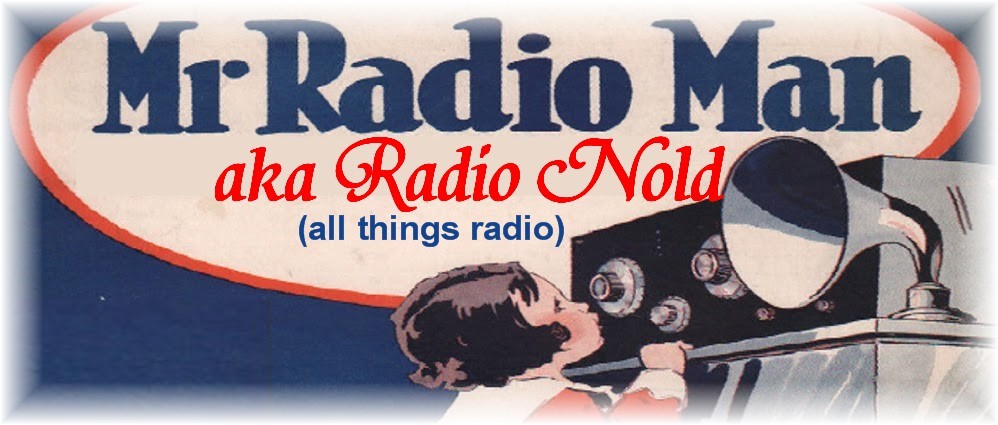In the above advert the radio was aimed at coach companies who were taking people on their holidays or day trips around the British Isles and wanted to give them a little comfort on the long journey. They also offered to install a public address system as part of the sales package. The War had just finished and people wanted to get out a little bit more.
I found this radio for sale at the Corley Wood garage, found in a quiet village not far from the M6 Corley services. I had brought his fathers old Ecko a few weeks back, that was a nightmare to restore and I'm just a sucker for more pain.
This is how she looked in the eBay photo, looking like it had been pulled from the local canal or as the Americans like to say "used as a boat anchor." It's quite large at 9 inches wide and 5 inches tall, about the size of a modern car battery and weighing around 9 lbs. But being built like a Tank made it last 75 years, so I'm not complaining.
The repair
These 5 pre-war designed valves use an enormous amount of heater current, a total of 4 amps. So the first thing I did was order a suitable 6 volt rechargeable battery for it as the radio has it's own HT vibrator that generates 300 volts from 6 volt input, used a lot by the military to power up field communications at time of war.
 |
| Circuit for Ekco CR32 |
The preset tuning controls hidden n behind the front panel are shown above, top left is a AGC disable switch that activates when front is removed to make it easier to tune in powerful signals. Under that is the chrome tone switch with on/off volume located in the centre, My knob was broken in 1/2 because the controls were jammed tight. Originally the tuner switch on the right showed named stations in the windows but that had faded away. I cleaned up most of the rust with wire wool and coated it with rust treatment, the speaker front is made from copper, presumably to help screen out the engine ignition noises. The chrome on the main front was too badly corroded to clean so I removed that and painted it silver.
Top left is 8uF electrolytic it was leaky and I swapped all the yellow Hunts capacitors, most were 0.1uF (100nF). I couldn't get at the dial light so I ran a yellow LED behind the front with a 100 ohm in series across heater pins.
The main fault turned out to be jammed vibrator contacts, this is a sealed unit but plugs into a 4 pin valve base. When removed I pealed the aluminium from the holder to open the unit up. Inside the contact reed is located inside a foam noise insulating 2 part package.
Unfortunately the circuit diagram shows the 12 volt vibrator unit, but I've included here how the 6 volt version is wired using only 3 connectors. When off the reed switches are both open, but on power-up the magnetic pull of it's coil shorts one switch out that in turn cuts the power to the winding and shorts the other switch and makes the contacts vibrate. Try as I did I couldn't clean the contacts with emery paper until I completely dismantled the reed unit to clean out the pitted holes on the burnt contacts. Making sure I took lots of photos to re-assemble it later.
 |
| Reed arm and contacts (make sure both open when power off - just a hair size gap) |
 |
| Arrow shows hole with carbon in, need to clean out with a sharp knife |
When I reassembled it the unit started to work and HT was gained again. The next day I turned it on and it was dead again, but this time it was the transformer that had failed. To find another TX is not going to happen, the primary winding is about 1/2 ohm and the secondary is 600 ohms, they just don't make that ratio and size unit anymore. So I started to dismantle the former of the transformer in the hope that it was broken near the outside, bingo! it was. Removing the outer paper is very tricky as there is a risk you damage the coil as you do it, but I pealed back too find a broken wire and re soldered it to the former connector wire.
 |
| Arrow shows where wire was broken on the 600 ohm secondary |
I must emphasise that you need a lot of patience to repair these 'old buggers' as the Aussies would say, but it's worth it in the end. When I re powered it up I than had a HT short and that turned out to be a rubber insulated wire had caught in the the transformer screening box when I re-fitted it - scream!!! Having the complete manual is a must when repairing this set, I anybody needs a PDF copy email me.
A short video of it working








No comments:
Post a Comment